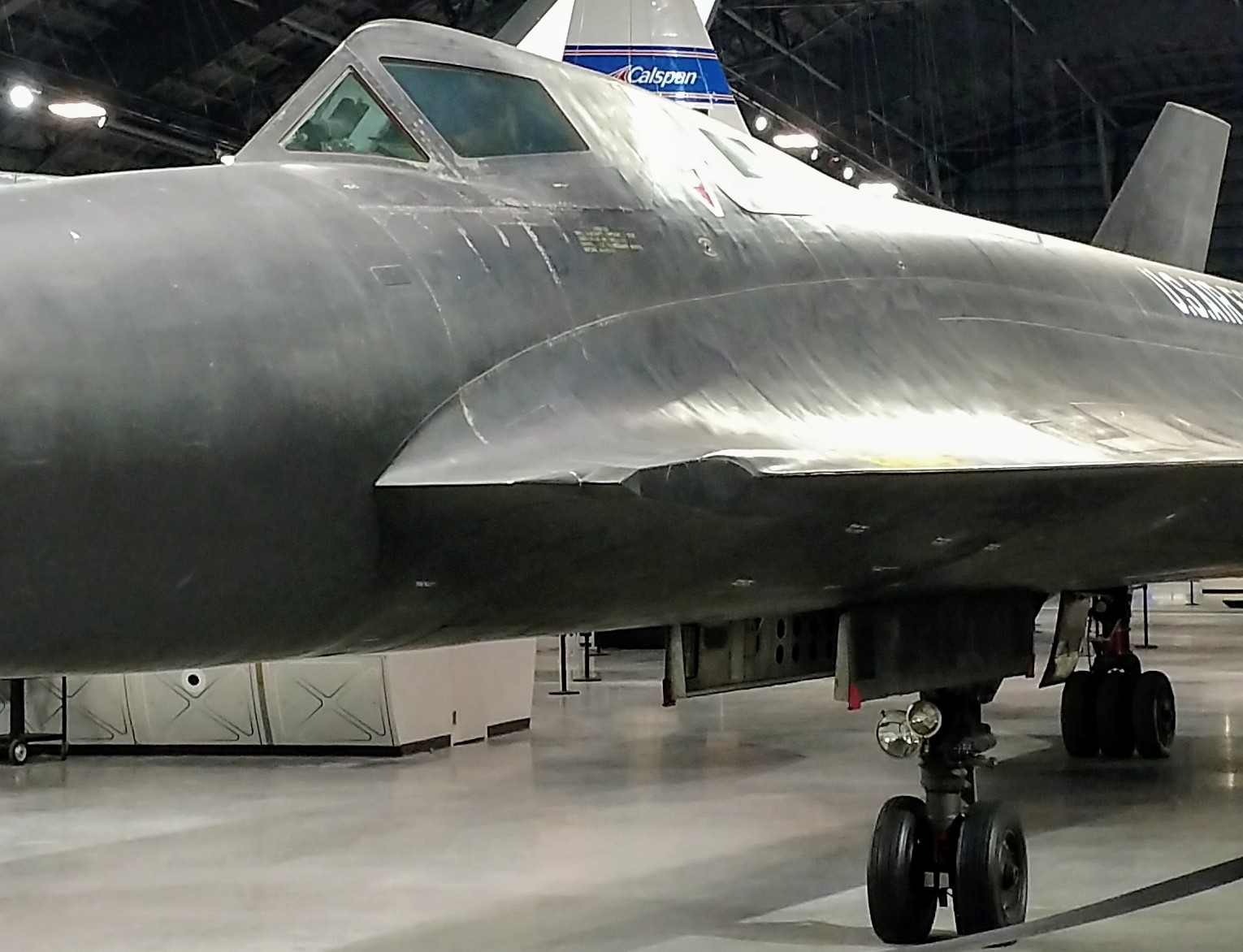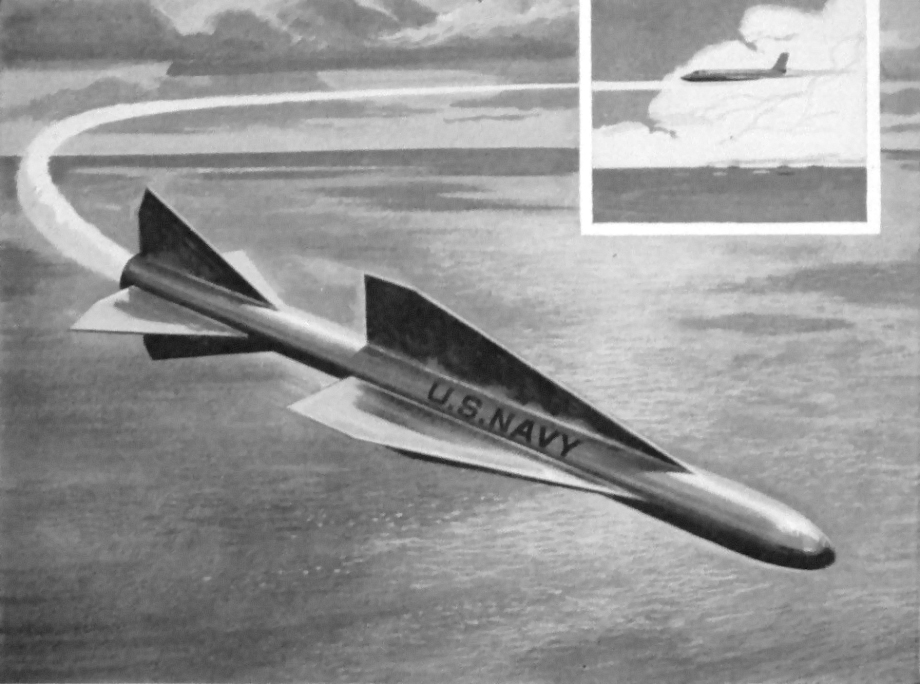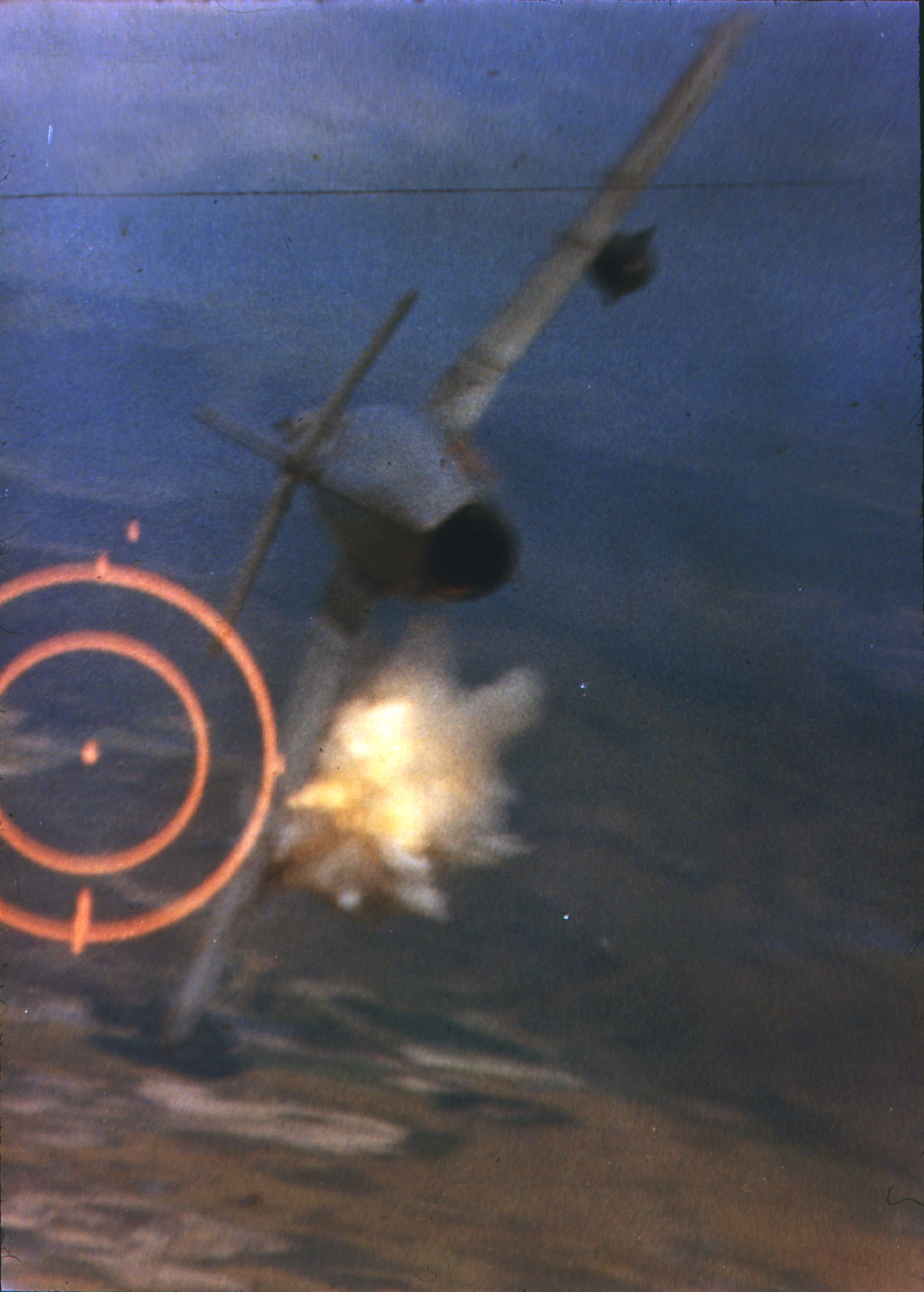|
AWG-9
The AN/AWG-9 and AN/APG-71 radars are all-weather, multi-mode X band pulse-Doppler radar systems used in the F-14 Tomcat, and also tested on TA-3B. It is a very long-range air-to-air system with the capability of guiding several AIM-54 Phoenix or AIM-120 AMRAAM missiles at the same time using its track while scan mode. The primary difference between the AWG-9 and APG-71 is the replacement of the former's analog computer with all-digital computer. Both the AWG-9 and APG-71 were designed and manufactured by Hughes Aircraft; contractor support is now being provided by Raytheon. The AWG-9 was originally developed for the failed naval F-111B program.Sweetman 1987, p. 622. The AN/AWG-9 offers a variety of air-to-air modes including long-range continuous-wave radar velocity search, range-while-search at shorter ranges, and the use of an airborne track-while-scan mode with the ability to track up to 24 airborne targets, display 18 of them on the cockpit displays, and launch against 6 o ... [...More Info...] [...Related Items...] OR: [Wikipedia] [Google] [Baidu] |
F-14 Radar TID
The Grumman F-14 Tomcat is an American carrier-capable supersonic, twin-engine, two-seat, twin-tail, variable-sweep wing fighter aircraft. The Tomcat was developed for the United States Navy's Naval Fighter Experimental (VFX) program after the collapse of the General Dynamics-Grumman F-111B project. The F-14 was the first of the American Teen Series fighters, which were designed incorporating air combat experience against MiG fighters during the Vietnam War. The F-14 first flew on 21 December 1970 and made its first deployment in 1974 with the U.S. Navy aboard , replacing the McDonnell Douglas F-4 Phantom II. The F-14 served as the U.S. Navy's primary maritime air superiority fighter, fleet defense interceptor, and tactical aerial reconnaissance platform into the 2000s. The Low Altitude Navigation and Targeting Infrared for Night (LANTIRN) pod system was added in the 1990s and the Tomcat began performing precision ground-attack missions. The Tomcat was retired by U.S. Navy on ... [...More Info...] [...Related Items...] OR: [Wikipedia] [Google] [Baidu] |
F-14 Tomcat Radar USSHM
The Grumman F-14 Tomcat is an American carrier-capable supersonic, twin-engine, two-seat, twin-tail, variable-sweep wing fighter aircraft. The Tomcat was developed for the United States Navy's Naval Fighter Experimental (VFX) program after the collapse of the General Dynamics-Grumman F-111B project. The F-14 was the first of the American Teen Series fighters, which were designed incorporating air combat experience against MiG fighters during the Vietnam War. The F-14 first flew on 21 December 1970 and made its first deployment in 1974 with the U.S. Navy aboard , replacing the McDonnell Douglas F-4 Phantom II. The F-14 served as the U.S. Navy's primary maritime air superiority fighter, fleet defense interceptor, and tactical aerial reconnaissance platform into the 2000s. The Low Altitude Navigation and Targeting Infrared for Night (LANTIRN) pod system was added in the 1990s and the Tomcat began performing precision ground-attack missions. The Tomcat was retired by U.S. Navy on ... [...More Info...] [...Related Items...] OR: [Wikipedia] [Google] [Baidu] |
F-14 Tomcat
The Grumman F-14 Tomcat is an American carrier-capable supersonic aircraft, supersonic, twinjet, twin-engine, two-seat, twin-tail, variable-sweep wing fighter aircraft. The Tomcat was developed for the United States Navy's Naval Fighter Experimental (VFX) program after the collapse of the General Dynamics–Grumman F-111B, General Dynamics-Grumman F-111B project. The F-14 was the first of the American Teen Series fighters, which were designed incorporating aerial warfare, air combat experience against Mikoyan, MiG fighters during the Vietnam War. The F-14 first flew on 21 December 1970 and made its first deployment in 1974 with the U.S. Navy aboard , replacing the McDonnell Douglas F-4 Phantom II. The F-14 served as the U.S. Navy's primary maritime air superiority fighter, fleet defense interceptor aircraft, interceptor, and tactical aerial reconnaissance platform into the 2000s. The Low Altitude Navigation and Targeting Infrared for Night (LANTIRN) pod system was added in the ... [...More Info...] [...Related Items...] OR: [Wikipedia] [Google] [Baidu] |
AIM-54 Phoenix
The AIM-54 Phoenix is an American radar-guided, long-range air-to-air missile (AAM), carried in clusters of up to six missiles on the Grumman F-14 Tomcat, its only operational launch platform. The Phoenix was the United States' only long-range air-to-air missile. The combination of Phoenix missile and the Tomcat's AN/AWG-9 guidance radar meant that it was the first aerial weapons system that could simultaneously engage multiple targets. Due to its active radar tracking, the brevity code " Fox Three" was used when firing the AIM-54. Both the missile and the aircraft were used by Iran and the United States Navy. In US service both are now retired, the AIM-54 Phoenix in 2004 and the F-14 in 2006. They were replaced by the shorter-range AIM-120 AMRAAM, employed on the F/A-18 Hornet and F/A-18E/F Super Hornet—in its AIM-120D version, the latest version of the AMRAAM just matches the Phoenix's maximum range. The AIM-54 has been used in 62 air-to-air strikes, all by Iran during ... [...More Info...] [...Related Items...] OR: [Wikipedia] [Google] [Baidu] |
Lockheed YF-12
The Lockheed YF-12 was an American Mach 3+ capable, high-altitude interceptor prototype, developed and manufactured by American aerospace company Lockheed Corporation. It was developed during the late 1950s and early 1960s as a potential replacement for the F-106 Delta Dart interceptor for the United States Air Force (USAF). The YF-12 was a twin-seat version of the then-secret single-seat Lockheed A-12 reconnaissance aircraft operated by the Central Intelligence Agency (CIA); unlike the A-12, it was furnished with the Hughes AN/ASG-18 fire-control radar and could be armed with AIM-47 Falcon (GAR-9) air-to-air missiles. Its maiden flight was on 7 August 1963. Its existence was publicly revealed by President Lyndon B. Johnson on 24 February 1964; this move was to provide plausible deniability for the CIA-operated A-12 fleet, which closely resembled the prototype YF-12. During the 1960s, the YF-12 underwent flight evaluations by the USAF, but funding to put it into operati ... [...More Info...] [...Related Items...] OR: [Wikipedia] [Google] [Baidu] |
Track While Scan
The track while scan (TWS) is a mode of radar operation in which the radar allocates part of its power to tracking the target or targets while part of its power is allocated to scanning, unlike the straight tracking mode, when the radar directs all its power to tracking the acquired targets. In the TWS mode the radar has a possibility to acquire additional targets as well as providing an overall view of the airspace and helping maintain better situational awareness. Background Early airborne radar systems generally operated purely as tracking systems, with a dedicated radar operator manually "tuning" the system to locate targets in a relatively narrow field-of-view in front of the aircraft. The searching area could be moved using a variety of methods, typically phase-shifting or lobe switching on lower frequency systems that required large antennas, or by moving the radar dish on microwave frequency radars. Engagements would start with ground controllers guiding the aircraft into ... [...More Info...] [...Related Items...] OR: [Wikipedia] [Google] [Baidu] |
F6D Missileer
The Douglas F6D Missileer was a proposed carrier-based fleet defense fighter designed by Douglas Aircraft Company in response to a 1959 United States Navy requirement. It was designed to be able to loiter for extended periods at a relatively long distance from the Navy's aircraft carriers, engaging hostile aircraft away with its powerful radar and long-range missiles. Since the enemy would be fired on long before they reached visual range, the aircraft had little dogfighting capability and was strictly subsonic. When doubts were expressed about the Missileer's ability to defend itself after firing its missiles, the value of the project was questioned, leading to its cancellation. Some of the Missileer's systems, primarily the engines, radar, and missiles, continued development in spite of the cancellation, eventually emerging on the ill-fated General Dynamics–Grumman F-111B and successful Grumman F-14 Tomcat years later. Development Background Through the later part of the ... [...More Info...] [...Related Items...] OR: [Wikipedia] [Google] [Baidu] |
AIM-120 AMRAAM
The AIM-120 Advanced Medium-Range Air-to-Air Missile, or AMRAAM (pronounced ), is an American beyond-visual-range air-to-air missile (BVRAAM) capable of all-weather day-and-night operations. It is 7 inches (18 cm) in diameter, and employs active transmit-receive radar guidance instead of semi-active receive-only radar guidance. It is a fire-and-forget weapon, unlike the previous generation Sparrow missiles which needed guidance from the firing aircraft. When an AMRAAM missile is launched, NATO pilots use the brevity code Fox Three. more than 14,000 had been produced for the United States Air Force, the United States Navy, and 33 international customers. The AMRAAM has been used in several engagements, achieving sixteen air-to-air kills in conflicts over Iraq, Bosnia, Kosovo, India, and Syria. Origins AIM-7 Sparrow MRM The AIM-7 Sparrow medium range missile (MRM) was purchased by the US Navy from original developer Hughes Aircraft in the 1950s as its first operatio ... [...More Info...] [...Related Items...] OR: [Wikipedia] [Google] [Baidu] |
AAM-N-10 Eagle
The AAM-N-10 Eagle was a long-range air-to-air missile developed by the Bendix Corporation for use by the United States Navy. Intended for carriage by the Douglas F6D Missileer fleet defense fighter, the Eagle program was cancelled before testing could begin, but the lessons learned were used in the development of the AIM-54 Phoenix missile. Design and development Development of the AAM-N-10 began in 1957 with the definition of the fleet defense fighter: a subsonic, long-endurance interceptor aircraft carrying a powerful radar set and very-long-range missiles, capable of shooting down enemy bombers at the greatest possible distance from the aircraft carriers they were attempting to attack. In 1958, Douglas Aircraft was contracted to develop the F6D-1 Missileer fighter, and the Bendix Corporation received a contract that December for the AAM-N-10 Eagle missile. Eagle was of conventional design for heavy air-to-air missiles of the time, with very low- aspect ratio, nearly delta w ... [...More Info...] [...Related Items...] OR: [Wikipedia] [Google] [Baidu] |
Dogfight
A dogfight, or dog fight, is an aerial battle between fighter aircraft conducted at close range. Dogfighting first occurred in Mexico in 1913, shortly after the invention of the airplane. Until at least 1992, it was a component in every major war, though with steadily declining frequency. Since then, longer-range weapons have made dogfighting largely obsolete. Modern terminology for air-to-air combat is air combat maneuvering (ACM), which refers to tactical situations requiring the use of individual basic fighter maneuvers (BFM) to attack or evade one or more opponents. This differs from aerial warfare, which deals with the strategy involved in planning and executing various missions. Etymology The term ''dogfight'' has been used for centuries to describe a melee: a fierce, fast-paced close quarters battle between two or more opponents. The term gained popularity during World War II, although its origin in air combat can be traced to the latter years of World War I. One of ... [...More Info...] [...Related Items...] OR: [Wikipedia] [Google] [Baidu] |
Vietnam
Vietnam or Viet Nam ( vi, Việt Nam, ), officially the Socialist Republic of Vietnam,., group="n" is a country in Southeast Asia, at the eastern edge of mainland Southeast Asia, with an area of and population of 96 million, making it the world's sixteenth-most populous country. Vietnam borders China to the north, and Laos and Cambodia to the west. It shares maritime borders with Thailand through the Gulf of Thailand, and the Philippines, Indonesia, and Malaysia through the South China Sea. Its capital is Hanoi and its largest city is Ho Chi Minh City (commonly known as Saigon). Vietnam was inhabited by the Paleolithic age, with states established in the first millennium BC on the Red River Delta in modern-day northern Vietnam. The Han dynasty annexed Northern and Central Vietnam under Chinese rule from 111 BC, until the first dynasty emerged in 939. Successive monarchical dynasties absorbed Chinese influences through Confucianism and Buddhism, and expanded ... [...More Info...] [...Related Items...] OR: [Wikipedia] [Google] [Baidu] |







